A pint-sized city of wooden houses and churches within a verdant Chilean archipelago – an expert guide to Castro, Chiloé
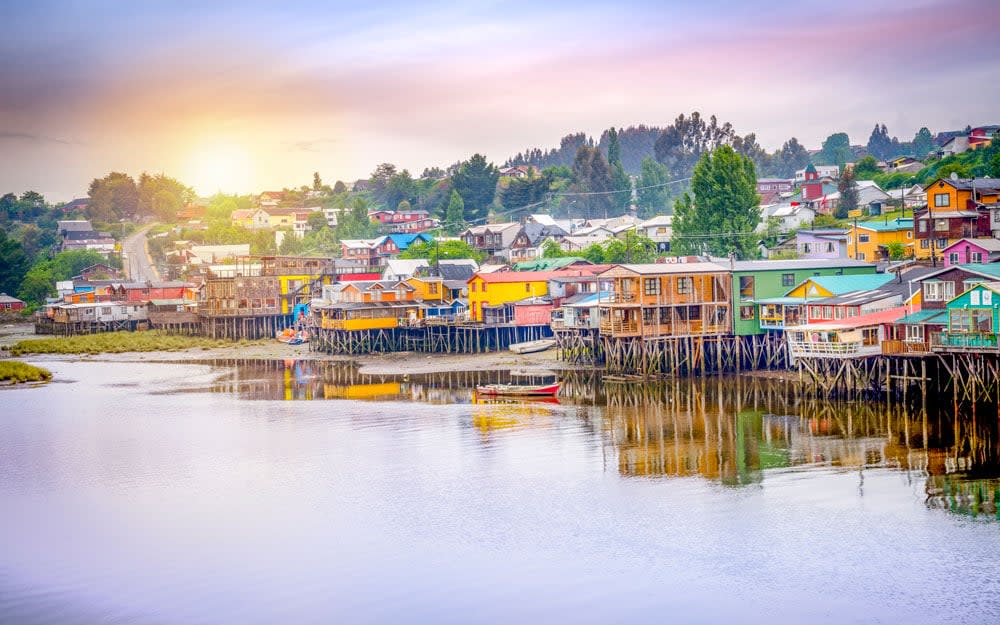
Why go?
This small, picturesque city is the main settlement on Chiloé, an archipelago of verdant, rolling topography that has its own distinctive history ever since colonial times. Population centres are few and far between south of the Chilean lake district and Castro is an opportunity to see one of the country’s oldest cities and enjoy a coffee/pisco sour, lunch and see a few sights – notably, the region’s churches.
Cruise port location
Chiloé is an archipelago just south of the Chilean lake district; it’s a gateway to Patagonia and the far south. Castro’s southside is a small peninsula jutting out into a very calm inlet of the Chiloé Sea, which is in turn a protected channel of the Pacific Ocean. The port is on the east side of town. Ships anchor off here and tenders are used to ferry passengers to the small dockside.
Hotels
If you’re spending any time in Chiloé before boarding a cruise, the Tierra Chiloé lodge, in Pullao Bay (half an hour’s drive from Castro), is highly recommended. Occupying a stylish contemporary building, it’s very luxurious but also provides a full-service package that make a stay a lot easier and far richer: from al fresco dining and a great bar, to mountain bikes and horses, to rides on its own vessels to see outlying island. In Castro itself, the Hotel de Castro is popular, while Palafito 1326 and Sizigia are lovely seaside hotels on stilts.
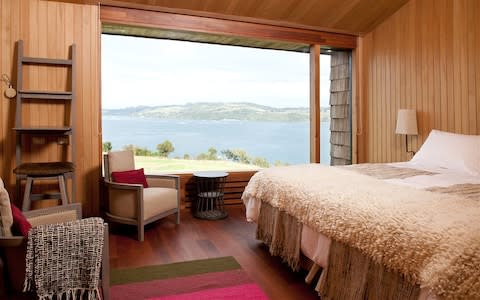
Can I walk to any places of interest?
Castro is pretty much all walkable from the port, though some of the streets are steep in the area around the wharf. The large San Francisco church is around 10 minutes on foot from the port.
Getting around
You can walk to most places in and around Castro. To do a tour of the area’s churches, you’ll need a coach, minibus or taxi. There are also water taxis out of Castro to other islands in the archipelago.
What to see and do
Castro and its environs are notable for their wooden houses, wood and metal-structured churches, beautiful island scenery and woollen handicrafts. Usually featuring as a stopover on a cruise along the fjords of southern Chile, this will almost certainly be the first/last significant populated centre you’ll see since/until Punta Arenas or Puerto Natales – at least three or four days’ sailing away.
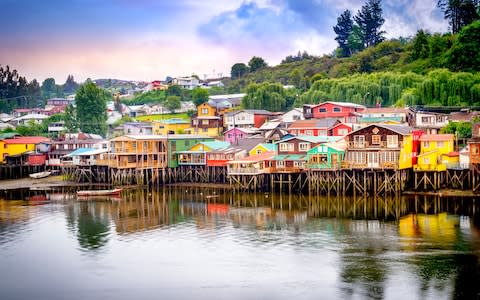
What can I do in four hours or less?
Four hours is plenty of time to take a good look at Castro, founded in 1567 by the Spanish and Chile’s third-oldest city. Home to less than 30,000 people, it’s nonetheless an important transport and tourism hub and the main centre on the Isla Grande de Chiloé – the main island in the archipelago.
Sixteen of the archipelago’s historic churches are UNESCO World Heritage Sites, and all of them are fairly close to Chiloé – though many involve a boat trip. Castro’s San Francisco, with its galvanised iron exterior and roof and ship’s hull-shaped wooden interior, is the obvious one to see; Nercón, built entirely from timber from local cypress and larch trees, is close too. If you stay put in Castro, make sure to see (with a guide on your cruise excursion or independently) the lively Plaza de Armas, where the San Francisco is located, Museo Regional, handicraft market, and the palafitos – the wooden stilted houses that stand above the muddy shoreline. Just outside the centre is the Museo de Arte Moderno on a hilltop in a municipal park, from which there are good views of the city and bay.
Holland America has a 4 ¾-hour horseback excursion that takes passengers, by bus, to the foothills of the Pichén mountains – just 15 minutes’ drive from Castro – and ride along country paths surrounded by native coihues (a beech species) to the shore of Río San Pedro (with a packed lunch on the riverbank). Beware of horseflies at certain times of the year.
What can I do in eight hours or less?
A half-day (5-6 hours) tour, as offered by several cruise operators, affords time to see Castro’s San Francisco church and – a short drive away – the churches at Nercón and Dalcahue, plus a beautiful chapel at Llaullao. Free time is usually made available at the end to browse for handicrafts at the Dalcahue craft market (known for its basketry).
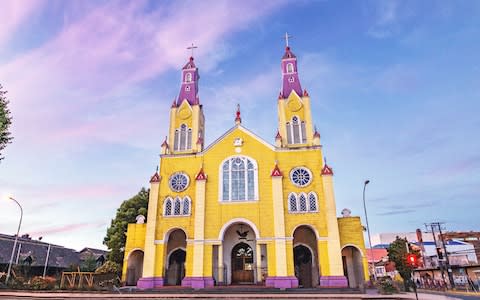
Alternatively, in a similar timeframe, Silversea combines Castro and its attractions with the churches at Vilipulli (visited by Charles Darwin in 1853) and Chonchi; the latter, founded by Jesuits in 1754, is known as the 'three-storey town', with its houses arranged on steps on the hillside.
Holland America offers guests a 5 ½ hour excursion to Chiloé National Park, located on the west coast of Chiloé Island. Some walking is required here (the operator describes it as “strenuous”) and the weather can be damp and the ground soggy, but the protected Valdivian forest – a temperate rainforest comprised of beeches and the endemic alerce (Fitzroya cupressoides) – is very beautiful.
Eat and drink
Chiloé is renowned across Chile for its curanto – a hearty seafood stew made from meat, shellfish, potatoes, dumplings and vegetables, typically cooked underground using hot stones and nalca (wild Chilean rhubarb) leaves; local restaurants prepare curantos in pots in their kitchens. Chilean wine is grown as far south as the lake district and it’s easy to get good bottles here in Castro.
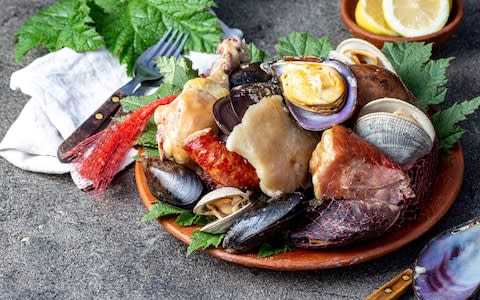
Don’t leave the city without…
It’s corny, but ponchos are excellent, as are Chiloé woollens in general. A couple of good craft shops are Sizigia and Orígenes.
Need to know
Flight time
British Airways flies direct from London Heathrow to Santiago de Chile in 14.5 hours; a direct local flight with Latam to Castro takes 1h 50m (schedules vary with the seasons).
Safety
Castro in particular and Chiloé in general are among the most serene spots in Chile which, anyway, is a one of the safer South American countries. The FCO advises: “Around 80,000 British nationals visit Chile each year. Most visits to Chile are trouble-free. Opportunistic street crime can be a problem in towns and cities, and in areas popular with tourists.”
Best time to go
Late October to April, late spring to the end of summer, is the best time of the year as it tends to be warm and drier, though rain is always possible in this region; summer is also the main cruise season. Avoid Christmas, New Year and Easter if possible.
Closures
Restaurants and many shops are open every day of the week, as are shopping malls. Museums tend to shut their doors on a Monday.


